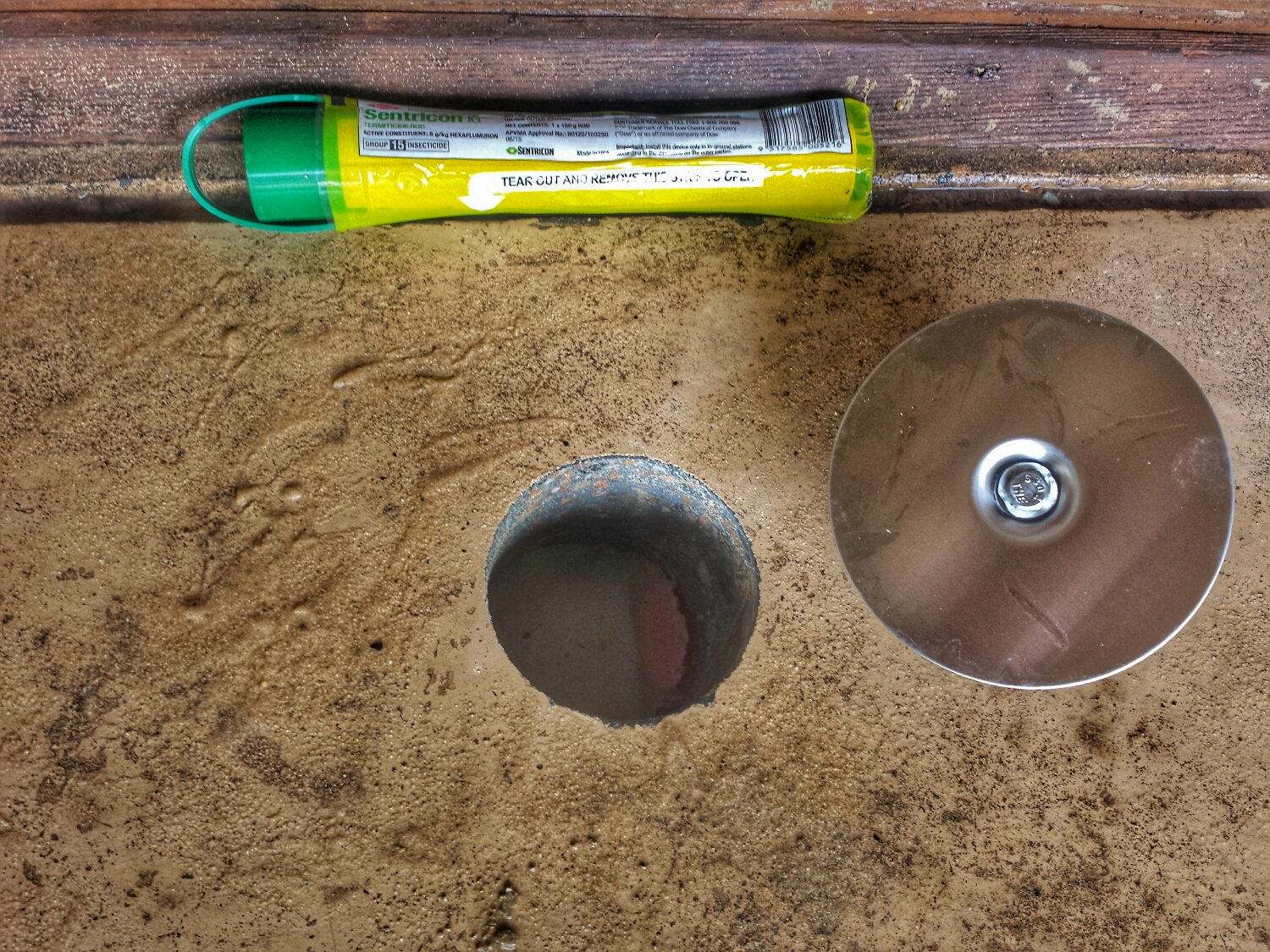Termite baiting allows a home to be protected from Termite colonies by eliminating the colony before it gets to the home.
Baits are installed around the perimeter to feed the termites a bait that eradicates the colony. But what if the home is surrounded by concrete?
That's where we use in concrete bait stations.
First - we make a nice round hole in the concrete..
BORING! Hmm.. Soft like butter!
A Sentricon Always active bait rod, along with it's built in extraction plastic ring thingy and a stainless steel cap.
Next - We clean up our mess and install a Sentricon Always active termiticide rod in the hole.
And Voila! We put a beautiful stainless steel cap on top which seals with an expandable rubber grommit.
The Sentricon Always active rod will now protect the home from any termites foraging in the vicinity of the home. The termites will feed on the rod and take the termiticide back to the nest, this will gradually eliminate the colony so it's no longer a threat to the home!
An in concrete baiting system ready to go!
The cap is installed and seals the rod in it's little hidey hole!




























